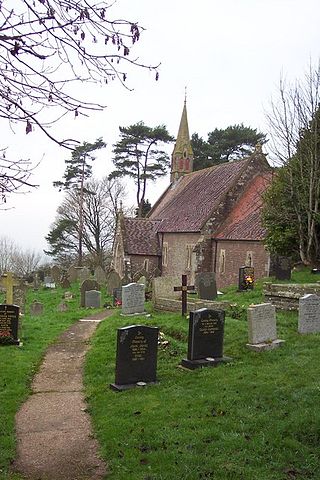
Llanishen is a village in Monmouthshire, southeast Wales, United Kingdom. It is located 7 miles (11 km) southwest of Monmouth and 3 miles (4.8 km) south of Trellech on the B4293 road, although the main part of the village is set immediately to the west of the road, overlooking the Vale of Usk.
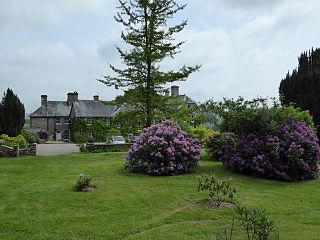
The Argoed, Penallt, Monmouthshire, Wales, is a Victorian country house dating from the 1860s, with earlier origins from the late 16th and early 17th centuries. It is a Grade II* listed building and the garden is listed on the Cadw/ICOMOS Register of Parks and Gardens of Special Historic Interest in Wales. The English meaning of the Welsh word argoed is 'by a wood'.

The Pant, Llanvihangel-Ystern-Llewern, Monmouthshire is a hall-house dating from the 16th century with an attached 17th century Quaker meeting house. It is a Grade II* listed building.

Ty-mawr Farmhouse, Ffwthog, Cwmyoy, Monmouthshire, is a farmhouse dating from the early 16th century, which was extended in the 17th century and then reduced in size in the 18th century. The farmhouse is a Grade II* listed building, with its range of barns and its bee shelter having separate Grade II listed building designations.

Ty-Hwnt-y-Bwlch Farmhouse,, Cwmyoy, Monmouthshire is a farmhouse in the north of the county dating from the late 16th century. Located on the hillside above the Church of St Martin, it is a Grade II* listed building.

Lower Dyffryn House, Grosmont, Monmouthshire is a farmhouse dating from the 16th century. Owned by a Sheriff of Monmouthshire in the early 1600s, it was rebuilt by the Cecil family in the mid 17th century as a substantial mansion to the typical Elizabethan e-plan. Its fortunes declined in the 19th century by which point it had been reduced to a farmhouse and much of its external and internal fittings were removed or replaced. The farmhouse is Grade II* listed and a number of the ancillary buildings have their own Grade II listings. The gardens, which are contemporaneous with the house, are included on the Cadw/ICOMOS Register of Parks and Gardens of Special Historic Interest in Wales.

Howick Farmhouse, in the hamlet of Howick, near Itton, Monmouthshire is a farmhouse dating from the mid-16th century. It is a Grade II* listed building. Its associated barns and stable block have their own Grade II listings.

Newhouse Farmhouse, Llanvetherine, Monmouthshire is a farmhouse dating from the late-16th century. It is a Grade II* listed building. Its associated barns and stable block have their own Grade II listings.

The Corn Barn, Stable and Cider House at Great Tre-Rhew Farm, Llantilio Crossenny, Monmouthshire form part of "one of the most completely surviving farmsteads in the county". Constructed in the late 17th century, the corn barn is an eight-bay structure with the stable and cider house forming two, gabled, linked additions. The whole is a Grade II* listed structure. The other buildings that comprise the farmstead include the farmhouse, a granary and brewhouse, and a shelter shed, all of which have their own Grade II listings.

Manor Farmhouse, or Crick Manor, Crick, Monmouthshire is a late medieval manor house dating from the 15th century. The buildings comprise a chapel, of 13th century origins, now a separate house, the medieval, stone hall, and a 16th-century wing. The buildings were originally constructed for the Denefords, and extended by their descendants, the Moores. In the 17th century, Nicholas Moore, High Sheriff of Monmouthshire entertained Charles I at the manor. The grouping has been "badly compromised" in later centuries. The house, privately owned and accommodating an archery centre, is Grade II* listed.
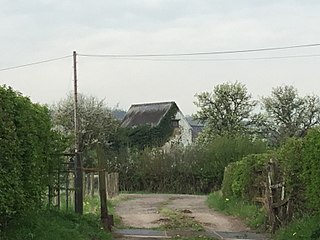
Pen-y-clawdd Farmhouse, Raglan, Monmouthshire is a gentry house dating from the early 17th century. Owned by the Bradburys, High Sheriffs of Monmouthshire, and later by the Williams family and then the Prichards of Penallt, it remains a privately owned farmhouse. The building is Grade II* listed.

The Cwm, Llantrisant, Monmouthshire is a farmhouse dating from the 16th century. Expanded in both the 17th and 18th centuries, The Cwm is a Grade II* listed building, its listing describing it as "a substantial farmhouse of distinctive T-plan".

Cwm Bwchel Farmhouse, Llanthony, Monmouthshire is a farmhouse dating from the late-Medieval period. It carries a date stone of 1694, which probably refers to a period of reconstruction. The farmhouse is Grade II* listed and a number of the ancillary buildings on the farmstead have their own Grade II listings.

The barn, stable and granary at Cwrt y Brychan , Llansoy, Monmouthshire are a range of farm buildings constructed in the 16th century. The origins are the site are ancient and the court is historically connected with the kingdom of Brycheiniog. The complex has a Grade II* listing, with the court having a separate Grade II listing.
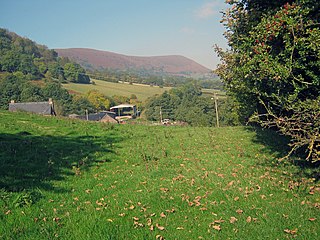
The barn at Trewyn Farm, Llanvihangel Crucorney, Monmouthshire is part of a complex of farm buildings dating from the late 16th century. The barn has a Grade II* listing, with the Old farmhouse at Trewyn Farm and Trewyn Farmhouse having separate Grade II listings.

Maerdy Farmhouse (The Maerdy), Llanvihangel-Ystern-Llewern, Monmouthshire is a farmhouse dating from about 1700. Extended later in the 18th century, it is an early example of the use of brick, rather than stone, in Monmouthshire. The farmhouse is Grade II* listed with its stableblock and shelter shed, and its barn and cider house having their own Grade II listings.

Wern-ddu farmhouse, Llantilio Pertholey, Monmouthshire is a farmhouse of 17th century origins. It has been significantly altered in the 18th, 19th and 20th centuries and the Monmouthshire antiquarian, Sir Joseph Bradney recorded that it had "suffered so much by continual alterations that it shows but little of its antiquity". It is a Grade II* listed building.

Blaengavenny Farmhouse, Llanvihangel Crucorney, Monmouthshire is a farmhouse of late medieval origins. It is a Grade II listed building. Its adjacent barn and granary have separate Grade II listings.
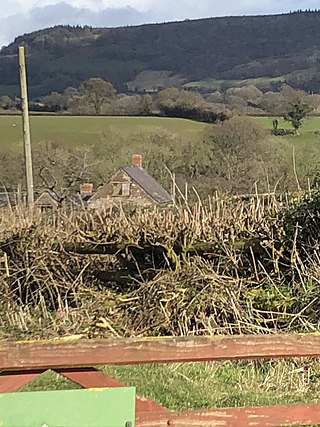
Lower Celliau,, Llangattock Lingoed, Monmouthshire is a farmhouse dating from the 16th century. It is a Grade II* listed building. The adjacent barn and shelter, and cowhouse and stable have their own Grade II listings.

Kemeys Manor, Langstone, Newport, Wales, is a manor house dating from the 13th century. The family that built it was established in South Wales in the Middle Ages by Edward, Lord of Kemeys and the manor was held by his descendants until the 18th century. The building was greatly enlarged in the 16th and 17th centuries and comprises a tower, hall and attached ranges. Kemeys is a Grade II* listed building. A barn to the north of the house, and Kemeys Folly to the south, are both listed at Grade II. The park surrounding the house is listed Grade II on the Cadw/ICOMOS Register of Parks and Gardens of Special Historic Interest in Wales. The manor and the folly remain private residences and are not open to the public.






















